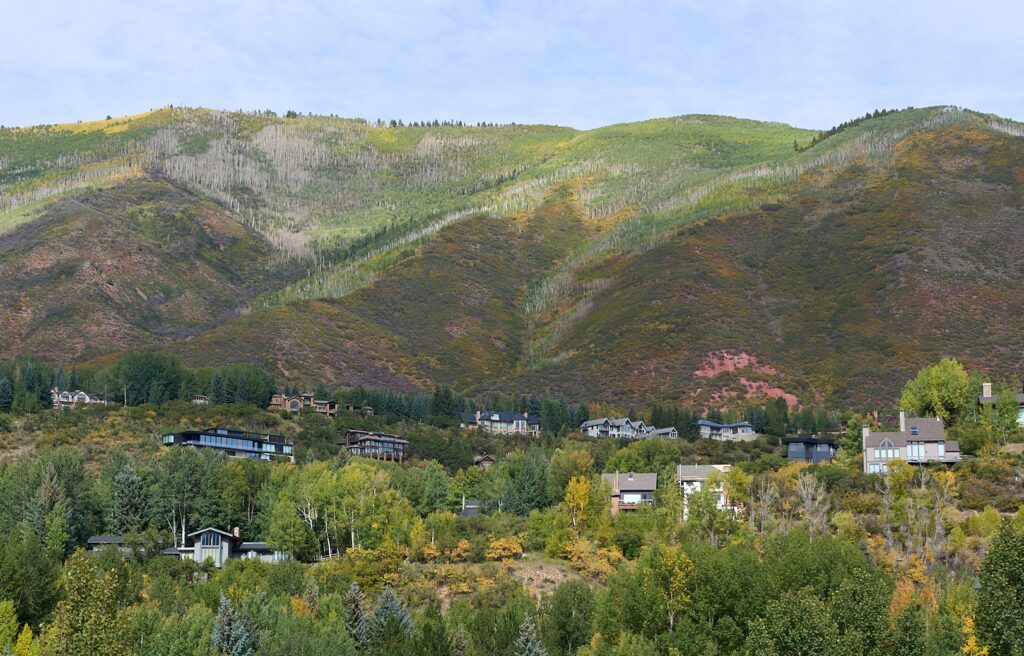Hunter Creek Prescribed Fire: A Victory for Collaborative Restoration
ACES Staff
May 17, 2016
On May 14th, 2016, following an extensive planning and monitoring process, a suitable spring burn window presented itself for the USFS White River National Forest and Upper Colorado River Interagency Fire Management Unit to conduct a prescribed fire on the south-facing slopes in the Hunter Creek Valley. The operation, which is part of the Hunter-Smuggler Cooperative Plan, successfully treated 900 acres of mountain shrub and aspen ecosystems in the wildland-urban interface adjacent to Aspen. The burn will enhance wildlife habitat and reduce hazardous wildfire fuels.
The prescribed fire was jointly funded by Aspen Center for Environmental Studies (ACES), Pitkin County Open Space and Trails, and the City of Aspen, with additional outreach support coming from the USFS White River National Forest, Wilderness Workshop, and Aspen Fire. The successful implementation of this burn is the result of years of work on the part of these organizations and represents a victory for restoration and collaboration.
What follows is a first-hand account of the operation and a summary of the work accomplished:
 |
 |
Early Saturday morning, with the forecast looking favorable to burn, fire personnel from multiple agencies gathered at the USFS Aspen Ranger Station for an operational briefing on safety, weather, burn objectives, logistics, and communication.
 |
 |
Once in the field, engines from the USFS, Aspen Fire, and other cooperating agencies were stationed on the valley floor and a test fire was set to assess fire behavior and smoke dispersal. Crews were looking to achieve a patchy, mosaic-like burn pattern to meet the desired outcomes for wildlife habitat and fuels reduction. With test fire fuels and smoke responding as desired, a hand crew began lighting a swath called a blackline, designed to help contain the spread of subsequent aerial ignitions. The operation progresses from the top down because fire moves uphill. By gradually putting fire lower on the hill, it limits the spread of the fire to small sections immediately above the ignition zone. The fire is stopped on the uphill side by the previously burned section.
 |
 |
With black-lining and hand-lighting complete, aerial ignition operations via helicopter commenced. A device called a Plastic Sphere Dispenser was mounted to the side of the helicopter. The dispenser is filled with ping pong-like balls, called plastic spheres, which are incendiary devices used to start fires from the air. The potassium permanganate-filled spheres are stored in a hopper at the top of the dispenser before moving into a tube where a needle injects them with a water-glycol solution similar to antifreeze. The chemical mixture makes the spheres combustible, and varying the proportions of the chemicals allows control of the amount of time it takes for a sphere to ignite. The number of spheres dropped helps determine the intensity of the burn. This is both an efficient and safe way to ignite a prescribed fire.
 |
 |
The helicopter gradually worked its way upvalley, always progressing down the slope, traversing and dropping lines of plastic spheres. As before, the fire was stopped on the uphill side by previously burned sections.
 |
 |
Fire behavior continued to produce the desired mosaic effect throughout the day. Natural barriers, such as snow, moisture-holding drainages, and previously black-lined firebreaks confined the fire to the desired units. The prescription for appropriate burning conditions called for snow in the conifer stands to protect them. In several cases, fire would move up a slope dominated by shrubs, reach a snow-holding conifer stand, and stop in its tracks (as seen in the above left photo). In other areas, natural variations in fuel moisture (also part of the burn prescription) created a patchy pattern.
 |
 |
After a few hours, aerial ignitions were complete. By that time, the first area to be ignited was already reduced to a smolder. The desired mosaic effect was already clearly visible: the darker areas were burned, while the lighter areas were not, resulting in a healthier, more diverse ecosystem (as seen in the above right photo). The fire was closely monitored that night, and the cold, wet storm system in subsequent days helped cool any hot spots remaining within the burn area. The valley was cleared for recreation a few days later; however, users were advised to exercise caution and be aware of fire-weakened aspen trees falling in the treatment area.
Fire personnel reported that the operation was successful; there were no safety mishaps, operations were done within prescription, wildlife objectives were met, and the weather cooperated as forecasted. Smoke impacts were minimal, and there were very few 911 calls due to extensive advance outreach. The fire will improve habitat for elk, deer, and other native wildlife by stimulating brush and aspen regeneration and returning nutrients to the soil. The burn also cleared out a buildup of hazardous fuels, providing a buffer between the Hunter-Fryingpan Wilderness and the City of Aspen in the event of a future wildfire.
The area is expected to regreen in a matter of weeks, especially considering the wet weather following the burn. A Community Weed Pull will take place in the Hunter Creek Valley on Saturday, July 9th to ensure the newly exposed ground isn’t contaminated by invasive species. Click here for more information.
View the complete slide show of the Hunter Creek Fire here.
For more information on ACES’ forest health initiatives, click here.
Related Content

RFV Phenology: Green is out, yellow is in! Or is it?
Learn More
ACES // City of Aspen Open Space Birding: Marolt Open Space 9/5/2024
Learn More